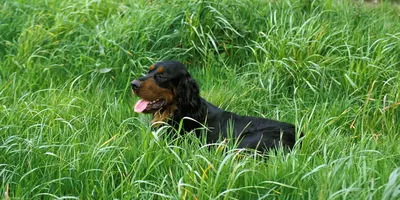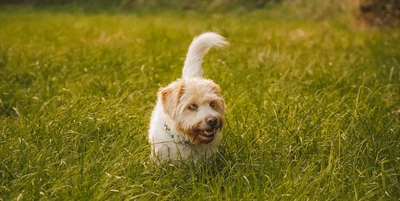Can Dogs Get Conjunctivitis?
- 04 Oct 2023
- 4m read

Yes, dogs can get conjunctivitis.
Symptoms of Conjunctivitis in Dogs
Just like humans, dogs can experience conjunctivitis. Recognizing the symptoms early is crucial for prompt treatment and ensuring your pup's well-being.
Redness and inflammation
One of the most noticeable signs of conjunctivitis in dogs is redness and inflammation of the eye or eyes. You may observe a pinkish or reddish tint in the whites of your dog's eyes, signalling a potential problem.
Excessive tearing
Excessive tearing, often accompanied by a discharge that can be clear, mucous-like, or even pus-filled, is a common symptom of conjunctivitis. If you notice your dog's eyes are constantly wet or have a sticky discharge, it's time to take action.
Blinking and squinting
Dogs with conjunctivitis may blink or squint frequently due to the discomfort caused by the condition. They may also paw at their eyes or rub their faces against furniture or their paws.
Swelling and swollen eyelids
Swelling of the eyelids and the area around the eyes can occur in dogs with conjunctivitis. This can make the eyes appear puffy and may lead to further irritation.
Sensitivity to light
Conjunctivitis can make dogs more sensitive to light, causing them to avoid bright environments or squint when exposed to light sources.
Causes of Conjunctivitis in Dogs
Understanding what can lead to conjunctivitis in dogs is essential for prevention and appropriate treatment. Several factors can contribute to this eye condition.
Bacterial infections
Bacterial infections are a common cause of conjunctivitis in dogs. Bacteria, such as staphylococcus or streptococcus, can infect the conjunctiva—the thin, transparent membrane covering the eye's white part.
Viral infections
Viruses, like the ones responsible for canine distemper or the canine herpesvirus, can also lead to conjunctivitis. These infections may affect one or both eyes and often come with other systemic symptoms.
Allergies
Just as humans can experience eye irritation due to allergies, dogs are not immune to allergens. Pollen, dust mites, or other environmental allergens can cause conjunctivitis in sensitive pups.
Foreign bodies
Sometimes, foreign objects like dust, grass, or small debris can get into a dog's eye, leading to irritation and conjunctivitis. It's important to promptly remove any foreign bodies and consult a vet if necessary.
Trauma or injury
Physical trauma or injury to the eye can result in conjunctivitis. This may occur due to accidents, rough play, or any situation where the eye is exposed to trauma.
Is Conjunctivitis Contagious in Dogs?
A common concern among dog owners is whether conjunctivitis is contagious among their furry friends. The answer depends on the underlying cause of the condition.
Bacterial and viral conjunctivitis
Bacterial and viral conjunctivitis can be contagious among dogs, especially if they come into close contact with an infected dog's eye discharge. It's crucial to isolate affected dogs and practise good hygiene to prevent the spread of these types of conjunctivitis.
Allergic conjunctivitis
Allergic conjunctivitis, caused by environmental allergens, is not contagious between dogs. However, it's essential to identify and manage the allergen triggering the reaction to alleviate your dog's symptoms.
Treatment for Dogs with Conjunctivitis
Treating conjunctivitis in dogs involves addressing the underlying cause and providing relief for your pet's discomfort. Always consult with your veterinarian for a proper diagnosis and treatment plan tailored to your dog's specific condition.
Antibiotics
For bacterial conjunctivitis, antibiotics are often prescribed by veterinarians to combat the infection. These may be in the form of eye drops or ointments. Administer the medication as directed and complete the full course even if symptoms improve.
Antiviral medication
If your dog has viral conjunctivitis, antiviral medications may be recommended. It's essential to consult your veterinarian for guidance on the appropriate treatment options.
Allergy management
Managing allergies is crucial for dogs with allergic conjunctivitis. This may involve avoiding allergens, using antihistamines, or considering allergy shots under the guidance of your vet.
Eye irrigation
In cases where foreign bodies are the cause, your veterinarian may perform eye irrigation to remove the foreign object safely.
Warm compresses
Applying warm compresses to your dog's eyes can help alleviate discomfort and reduce swelling. Be sure to use a clean cloth and consult your vet for proper instructions.




